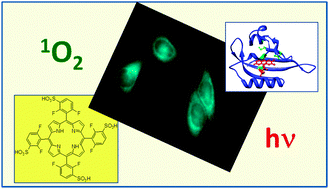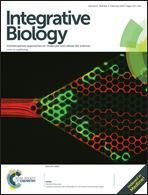Intracellular singlet oxygen photosensitizers: on the road to solving the problems of sensitizer degradation, bleaching and relocalization†
Abstract
Selected singlet oxygen photosensitizers have been examined from the perspective of obtaining a molecule that is sufficiently stable under conditions currently employed to study singlet oxygen behavior in single mammalian cells. Reasonable predictions about intracellular sensitizer stability can be made based on solution phase experiments that approximate the intracellular environment (e.g., solutions containing proteins). Nevertheless, attempts to construct a stable sensitizer based solely on the expected reactivity of a given functional group with singlet oxygen are generally not sufficient for experiments in cells; it is difficult to construct a suitable chromophore that is impervious to all of the secondary and/or competing degradative processes that are present in the intracellular environment. On the other hand, prospects are reasonably positive when one considers the use of a sensitizer encapsulated in a specific protein; the local environment of the chromophore is controlled, degradation as a consequence of bimolecular reactions can be mitigated, and genetic engineering can be used to localize the encapsulated sensitizer in a given cellular domain. Also, the option of directly exciting oxygen in sensitizer-free experiments provides a useful complementary tool. These latter systems bode well with respect to obtaining more accurate control of the “dose” of singlet oxygen used to perturb a cell; a parameter that currently limits mechanistic studies of singlet-oxygen-mediated cell signaling.


 Please wait while we load your content...
Please wait while we load your content...